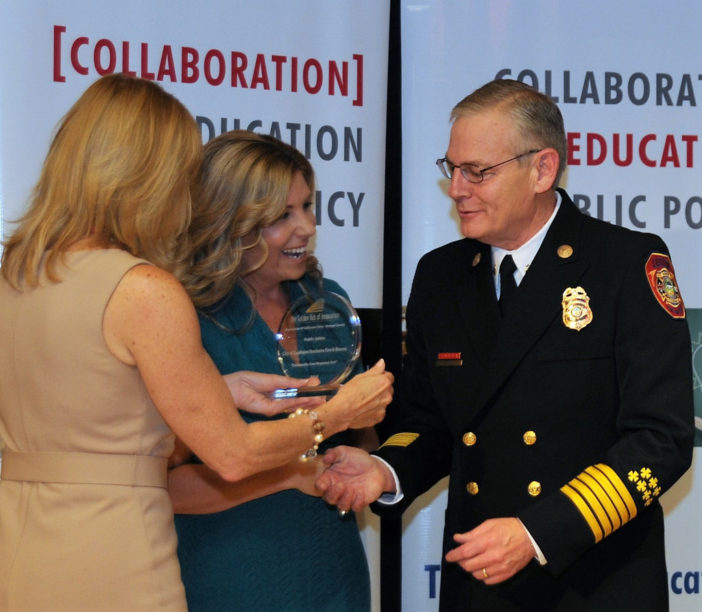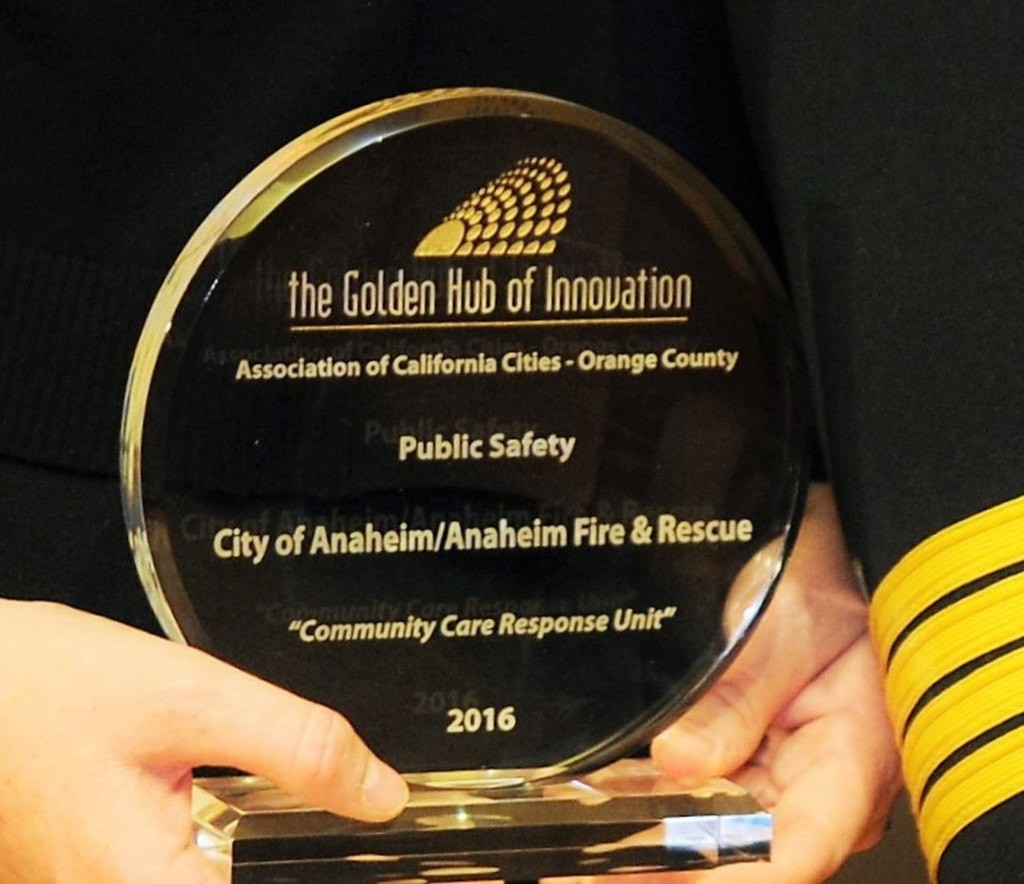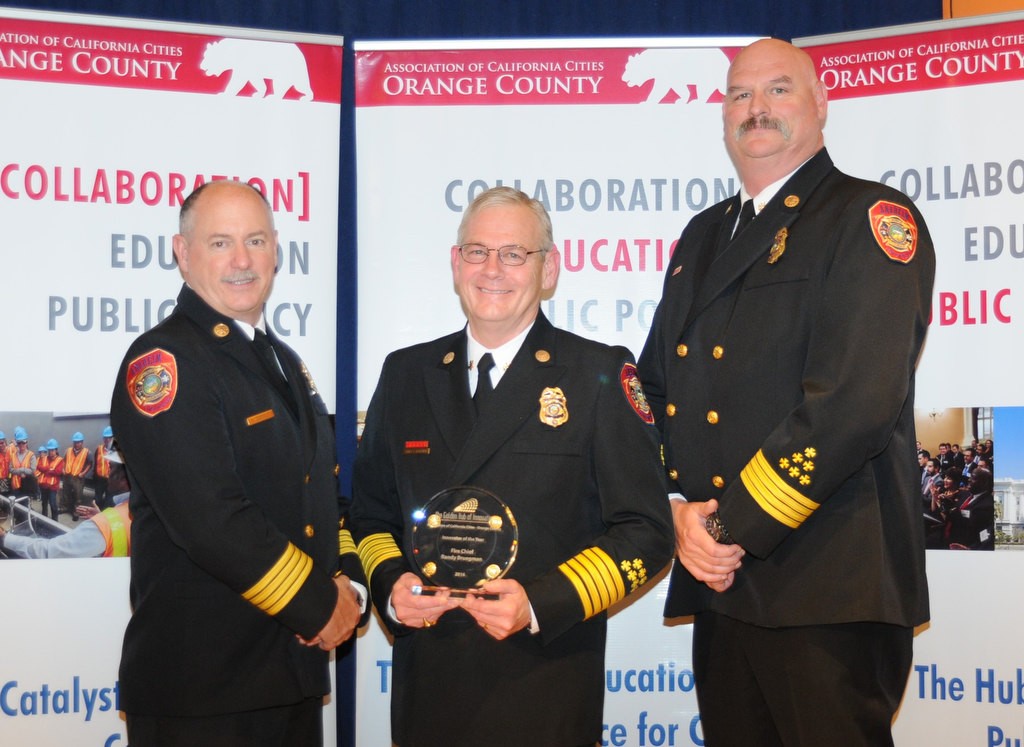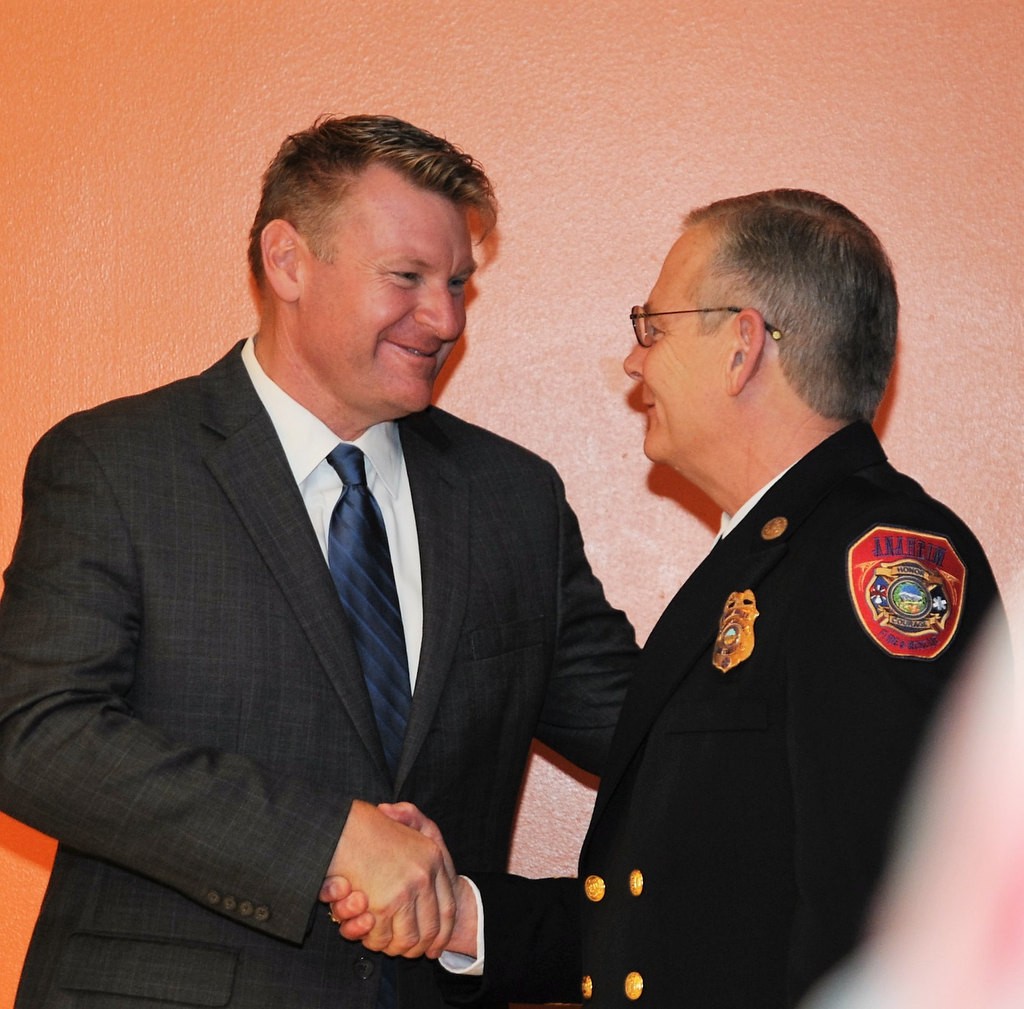In his five-plus years guiding the men and women of Anaheim Fire & Rescue, Chief Randy Bruegman and his leadership team have implemented initiatives that have garnered recognition at national and international levels.
One of those initiatives, the Community Care Response Unit, recently earned Bruegman Innovator of the Year honors from the Association of California Cities – Orange County (ACC-OC).
The chief was presented with the award at ACC-OC’s Golden Hub of Innovation Awards ceremony Thursday, June 9, at the Discovery Cube Orange County in Santa Ana.
The Community Care Response Unit also earned a Public Safety award in the large city category at the ceremony.

Heather Stratman, CEO of ACC-OC, congratulates Anaheim Fire & Rescue Chief Randy Bruegman after he was named Innovator of the Year for implementing the Community Care Response Unit. Photo by Lou Ponsi
The first-ever program of its kind in the state, the Community Care Response Unit involves using a nurse practitioner and an ambulance to respond to non-urgent, low-level calls for service, freeing up the paramedic fire engine for more critical calls.
The City of Anaheim, Kaiser Permanente Orange County, CARE Ambulance Service and Metro Cities Fire Authority make up the partnership, which has cut costs for patients, the city and the health care system.
“I feel like it (the award) actually shouldn’t come to me,” Bruegman said of the award. “It should come to the group that I work with and the partners in the community, because the fact of the matter is, if it were not for them, we would not have been able to accomplish this.”
The collaboration sprang out of a conversation between the fire chief and Dr. Nancy Gin, medical director for Kaiser Permanente of Orange County.
The two met a few years ago at a charity event, where they discussed a shared desire to create more efficient, cost-effective methods of providing services. After two years of research by AF &R, the concept of using a mid-level provider in concert with EMS units was determined to be a viable adjunct to the community’s traditional Emergency Medical Service.
Kaiser went on to present a grant to Anaheim Fire & Rescue that would be used to hire a nurse practitioner and purchase the necessary equipment for stocking an ambulance.
Criteria for when the nurse practitioner would be dispatched were developed.
“This was an opportunity for us to demonstrate a new way to provide emergency services that is far more affordable, allows people to stay home and allows emergency departments to be open for people who actually need emergency services,” Gin said. “It’s a really proud moment to be able to be part of a program that we hope will help to redefine what emergency services can provide for our communities.”
In its first year, the unit served about 320 patients, Bruegman said, and kept 51 percent of them from needing to be taken to a hospital emergency department. The unit also has been able to release the Advanced Life Support Fire/Paramedic units 90 percent of the time.

Anaheim Fire & Rescue Chief Randy Bruegman garnered the Innovator of the Year Award at the Golden Hub of Innovation Awards ceremony, hosted by the Association of California Cities – Orange County. Photo by Lou Ponsi
A nurse practitioner can perform a higher level of assessment than a paramedic can, freeing up fire personnel to respond to more critical emergencies, the chief said.
“The idea is to reduce the cost to the overall health care system, lessen the impact on our emergency rooms, increase the availability of our fire/paramedic units, and to enhance the patient experience,” he said.
Gin said inquires have been coming in throughout the state from agencies interested in forming similar partnerships aimed at cost savings and better service.
“We’re all in it together,” the doctor said. “Everybody is looking at how we can do this smarter.”
Anaheim’s Public Utilities’ Greenhouse Gas Reduction Plan also took home an award in the Energy & Environmental Quality category for a large city.
The plan is a 15-year effort designed to reduce greenhouse gas emissions from APU energy sources by transitioning to renewable power.
Initiatives include transitioning to electric vehicles, conserving water and advocating for rooftop solar energy production.
The result will be a more sustainable city for residents.
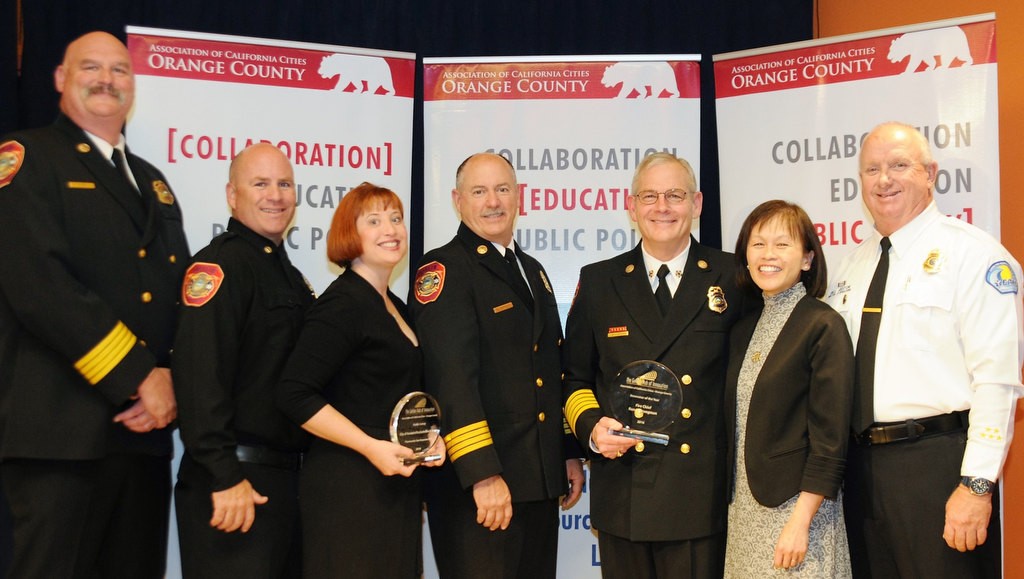
Anaheim Fire & Rescue took home two significant awards at the Golden Hub of Innovation Awards ceremony held Thursday, June 9, at the Discovery Cube in Santa Ana. Fire Chief Randy Bruegman earned Innovator of the Year honors for implementing the Community Care Response Unit, which stems from a partnership with Kaiser Permanente of Orange County. The Community Care Response Unit also earned a Public Safety award. From left are Deputy Chief Pat Russell, Cpt. Dave Barry, Nurse Practitioner Vickie Morrison, Deputy Chief/Fire Marshal Rusty Coffelt, Chief Bruegman, Dr. Nancy Gin, medical director for Kaiser Permanente of Orange County, and Bill Weston, director of Operations for Care Ambulance. Photo by Lou Ponsi
 Behind the Badge
Behind the Badge
